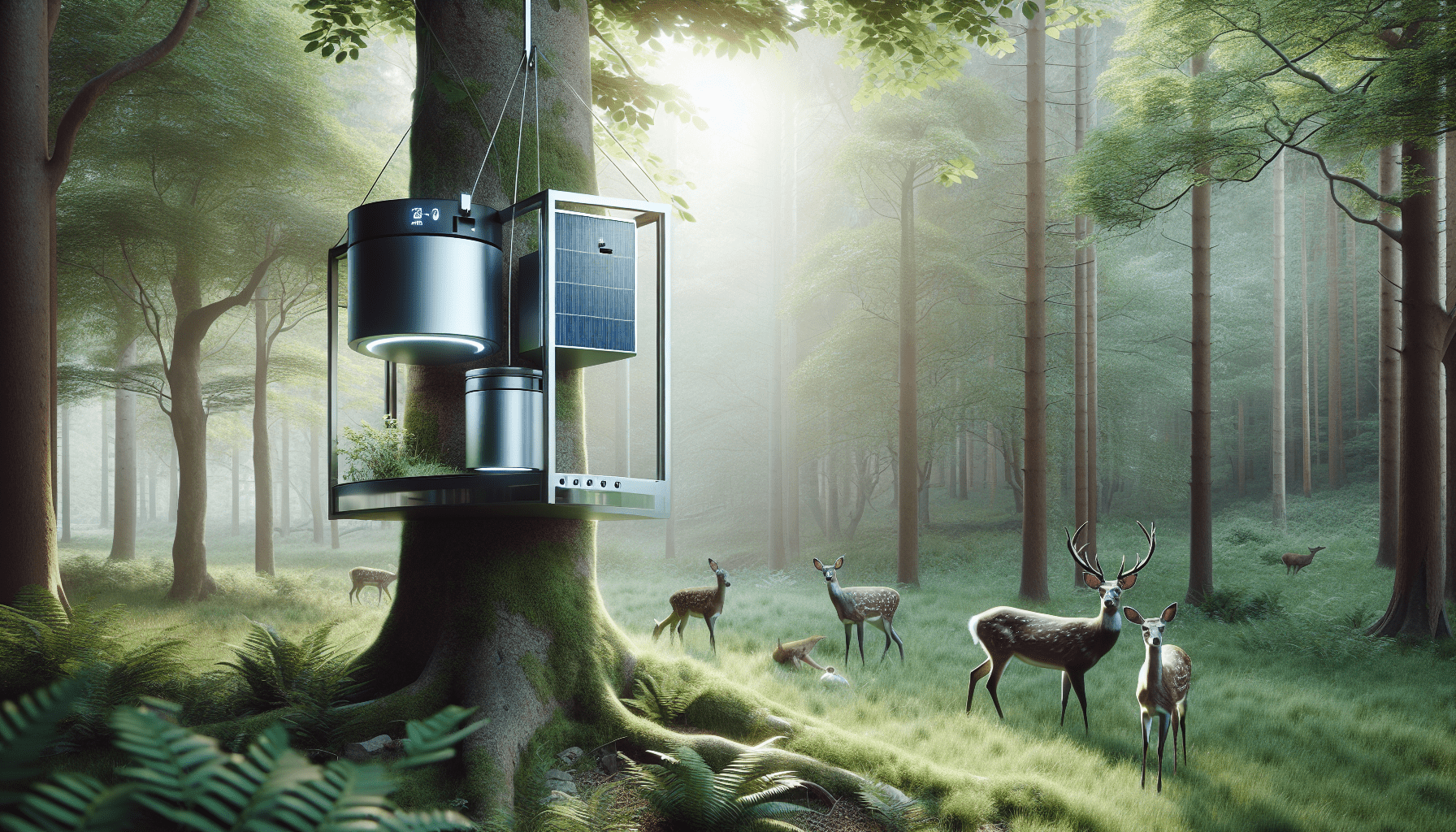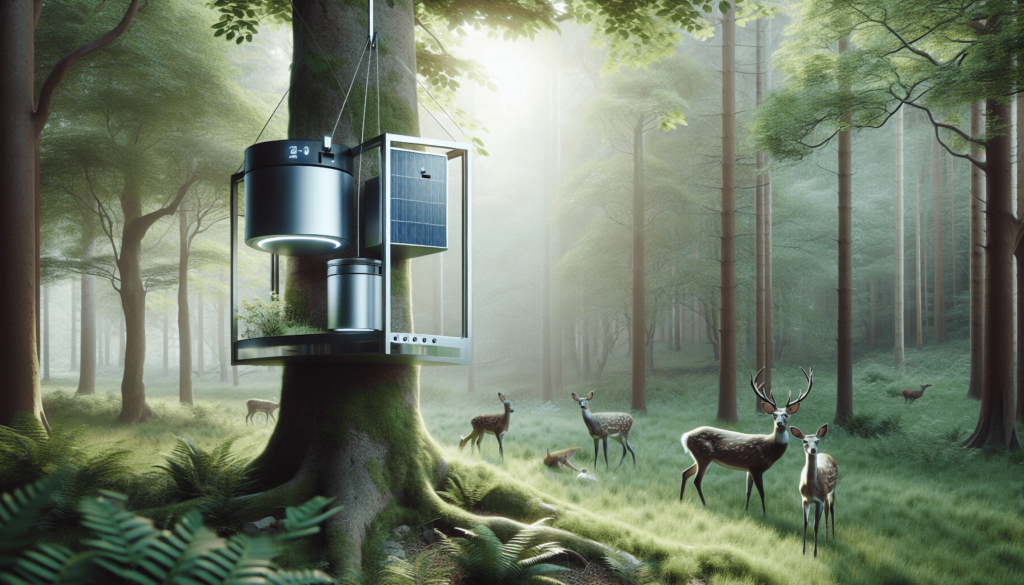
Have you ever wondered how the process of feeding deer has transformed over the years? From primitive methods to advanced technological solutions, the evolution of hanging deer feeders is nothing short of fascinating. This journey showcases the progress from basic setups to sophisticated systems designed to make wildlife management easier and more efficient.

Early Beginnings: Simple Designs
The First Hanging Deer Feeders
In the beginning, deer feeding was a rudimentary task. These feeders were often simple containers, like buckets or troughs, suspended from trees. They relied on natural gravity to dispense feed. The main goal was to attract deer for hunting or observation purposes.
Challenges with Early Models
These early hanging deer feeders, though straightforward, came with several challenges:
1. Limited Capacity: They often couldn’t hold much feed, requiring frequent refilling. 2. Poor Durability: Using simple materials meant that these feeders didn’t last long, especially in harsh weather conditions. 3. Accessibility Issues: They easily allowed other wildlife, such as raccoons and squirrels, to access the feed, which limited the efficacy of attracting deer.
The Introduction of Mechanized Feeders
The Advent of Timed Dispensers
With advancements in technology, mechanized hanging deer feeders entered the scene. Brands like Moultrie and American Hunter took the lead in producing feeders that used timers to dispense feed at specific intervals.
Benefits of Timed Feeders:
1. Controlled Feeding: Offered better control over feeding times, which helped in creating a consistent pattern for deer. 2. Larger Capacity: Improved designs allowed for storing more feed, reducing the frequency of refills. 3. Reduced Waste: Timed release meant less food was wasted and improved feeding efficiency.
Challenges with Mechanized Models
Even though mechanized feeders significantly improved the process, they were not without challenges:
1. Battery Dependency: These feeders relied heavily on batteries, leading to potential malfunctions if power ran out. 2. Complexity: More moving parts meant higher chances of mechanical failure, requiring maintenance and understanding of mechanical systems.
The Emergence of Programmable Feeders
Smart Technology Integration
As technology evolved, so did hanging deer feeders. Programmable models with digital timers and remote operation features emerged. This was a game-changer in wildlife management.
Key Features of Programmable Feeders:
1. Versatility: Ability to program multiple feeding schedules, making it easier to manage feeding times. 2. Remote Operation: Some models come with remote controls, allowing you to manage feeders from a distance. 3. Data Tracking: Advanced feeders provide data tracking on usage patterns, which can be invaluable for monitoring wildlife activity.
Leading Brands in Smart Feeders
Several brands have embraced these advanced technologies, each offering unique features. brands such as WILDGAME INNOVATIONS, SolutionsPatIQ, and Highwild have distinguished themselves in producing top-notch programmable feeders.
Comparison Table of Programmable Feeders:
| Brand | Key Features | Remote Operation | Data Tracking |
|---|---|---|---|
| WILDGAME INNOVATIONS | Multiple feeding schedules, durable | Yes | Yes |
| SolutionsPatIQ | High-capacity, energy-efficient | No | Yes |
| Highwild | Easy setup, robust connectivity options | Yes | No |
Gravity Fed Feeders: The No-Fuss Solution
How Gravity Feeders Work
gravity-fed deer feeders, like those from brands such as Gravity Fed and Keilyn, use simple mechanics where the feed is naturally dispensed due to gravitational forces. They are incredibly easy to use and require minimal maintenance.
Benefits:
1. Simplicity: Easy to set up, with no complex programming or moving parts. 2. Reliability: Less prone to mechanical failures since they rely on natural forces. 3. Quiet Operation: No timers or motors mean they make virtually no noise, which can reduce disturbances for deer.
Limitations:
1. No Control Over Feeding Times: You cannot control when the feed is dispensed, which might lead to unwanted wildlife access. 2. Regular Monitoring Required: Without a timed release, you need to monitor and refill more frequently.

Solar-Powered Feeders: Harnessing Renewable Energy
Merging Technology and Sustainability
Recent innovations have introduced solar-powered deer feeders. Brands like Boss Buck and On Time Wildlife Feeders are leading the charge with these eco-friendly options.
Advantages of Solar-Powered Feeders:
1. Sustainable: Using solar energy reduces dependency on batteries and electricity. 2. Long-Term Cost Efficiency: Although initial costs might be higher, in the long run, they are more economical. 3. Eco-Friendly: Less environmental impact compared to traditional battery-operated models.
Practical Challenges:
1. Sunlight Dependency: Requires adequate sunlight for optimal performance, which might be a limitation in densely wooded areas. 2. Initial Cost: Higher initial investment compared to conventional feeders.
Advanced Smart Feeders: The Future is Here
Integration with IoT (Internet of Things)
The newest evolution in hanging deer feeders involves integrating them with IoT. Brands like KUMFJ and Andee have introduced feeders that can be controlled via smartphone apps.
Features of IoT-Integrated Feeders:
1. Real-Time Monitoring: Allows you to monitor the status and feed levels in real-time through an app. 2. Remote Control: Feeders can be operated remotely, making wildlife management incredibly convenient. 3. Alerts and Notifications: Receive updates and alerts about feed levels, battery status, and more directly on your phone.
Advantages:
1. Precision: Enhanced control over feeding patterns and times with unparalleled accuracy. 2. Convenience: Manage multiple feeders from a single interface, saving time and effort. 3. Data Analytics: Access to detailed data on feeder usage and wildlife patterns can be useful for research and better management strategies.
Considerations:
1. Cost: Advanced smart feeders come with a higher price tag. 2. Tech-Savvy: Requires basic understanding and familiarity with technological devices and apps.
Making the Right Choice: Factors to Consider
Key Considerations When Selecting a Deer Feeder
1. Purpose: Determine whether you need the feeder for hunting, wildlife observation, or other purposes. 2. Location: Take into account the geographic and environmental conditions where the feeder will be installed. 3. Budget: Balance between immediate costs and long-term benefits. 4. Automation Level: Choose between manual, mechanized, programmable, or smart feeders based on your needs and comfort with technology.
| Factor | Manual Feeders | Mechanized Feeders | Programmable Feeders | Gravity Feeders | Smart Feeders |
|---|---|---|---|---|---|
| Ease of Use | High | Moderate | Moderate | High | Low |
| Initial Cost | Low | Medium | Medium | Low | High |
| Maintenance | Low | Medium | Medium | Low | Medium |
| Control | Low | High | High | Low | Very High |
Conclusion
The evolution of hanging deer feeders demonstrates a remarkable journey from simplicity to sophistication. From rudimentary gravity-fed systems to the latest IoT-integrated smart feeders, each advancement has brought increased efficiency and convenience. By understanding the features, benefits, and limitations of each type, you can make an informed decision that best suits your needs. Whether you’re an avid hunter, a wildlife enthusiast, or someone interested in sustainable practices, there’s a hanging deer feeder out there that’s perfect for you.



